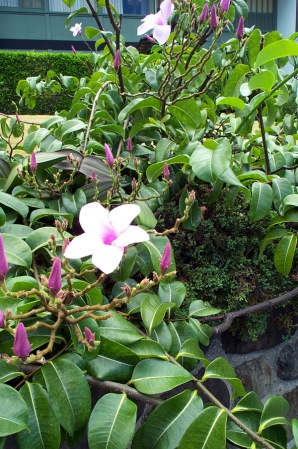How does a two-person team control 850 invasive trees? If you’re MoMISC, you ask for permission first—from the landowner, the…
Read More
Molokai
Poisonous Rubber Vine Needs to be Controlled
When the crew from the Maui Invasive Species Committee (MISC) arrived on Moloka‘i in February of 2005, they soon realized…
Read More

